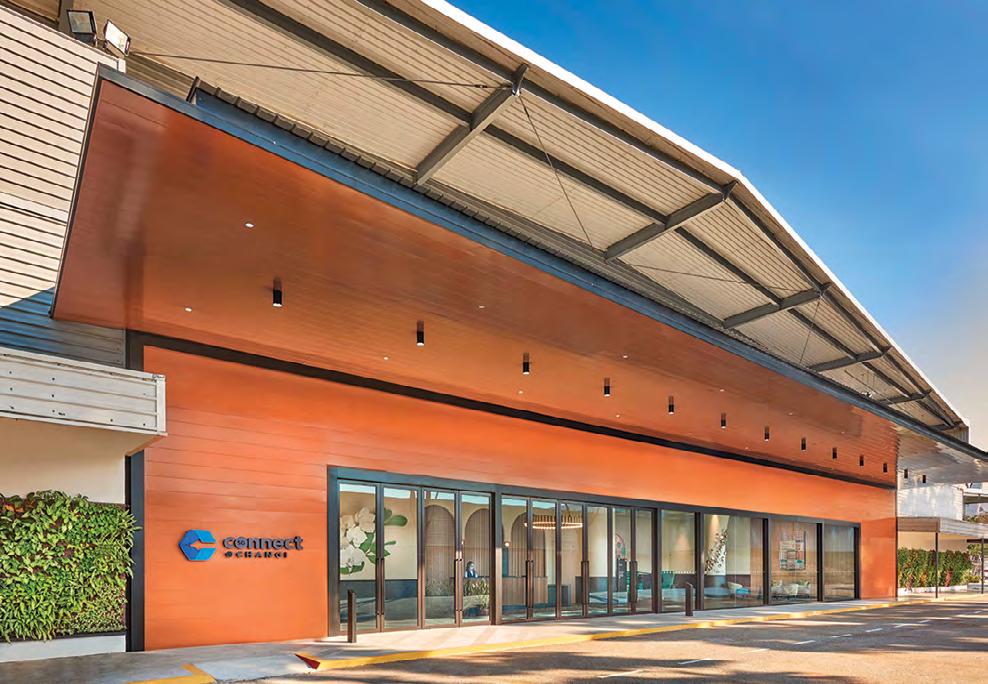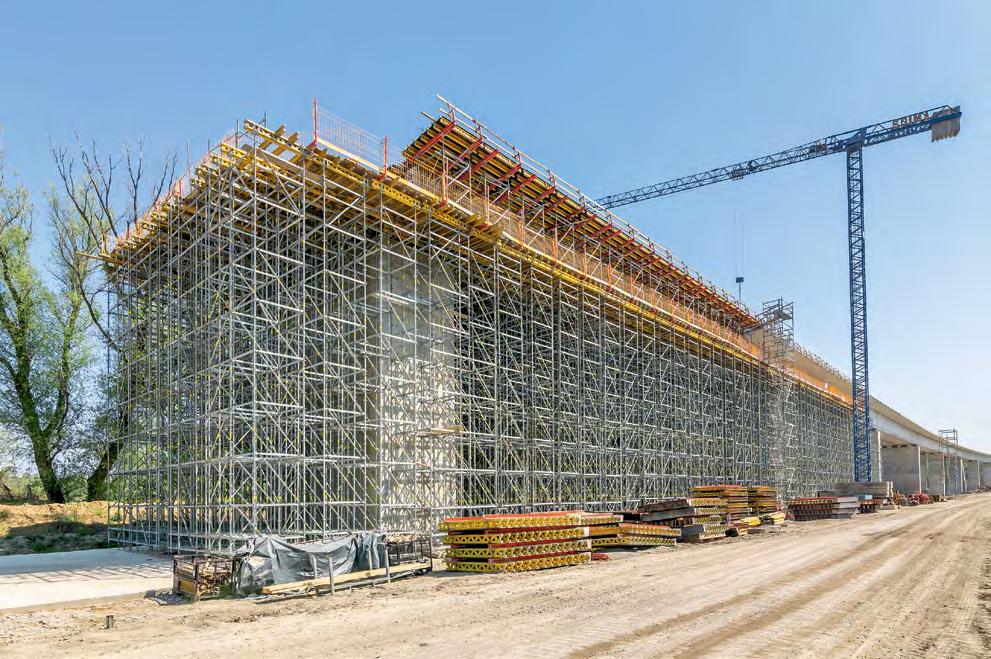
15 minute read
Clearing the way for a new viaduct on the Budapest-Belgrade high-speed line A number of challenges were addressed and rapid progress was achieved in the construction
CLEARING THE WAY FOR A NEW VIADUCT ON THE BUDAPEST-BELGRADE HIGH-SPEED LINE
A number of challenges were addressed and rapid progress was achieved in the construction.
The Budapest-Belgrade line is part, and the first stage, of the planned international railway connection BudapestBelgrade-Skopje-Athens and is currently one of the largest investment and infrastructure construction sites in the eastern part of Europe. PERI supported the construction of the Čortanovci Viaduct on the Serbian section of the project, between Stara Pazova and Novi Sad, and in addition to intensive on-site support, also provided combinable system solutions based on the modular principle. The railway line stretches some 350 km across the Serbian-Hungarian border. Until now, travellers took eight hours to get to their destination - but that is soon to change. It would soon be possible to travel from Budapest to Belgrade in just three and a half hours. The immense modernisation project, which is divided into a total of three sections, is scheduled for completion as early as 2023. One of the bigger challenges on this route was the Čortanovci Viaduct which is located within the second, approximately 40 km long section between Stara Pazova and Novi Sad. As part of the double-track, open railway line, the viaduct covers a total length of 2.9 km and is supported by a total of 59 columns. Approval to start the project, which is divided into five construction phases (A to E), was given in November 2017. PERI provided on-site support for the construction of the two sections, B and C, each 642 m long.
System combination based on the modular principle
Both sections, B and C, were constructed using the same methodology, in principle. Starting from the delta pier in the middle, concrete was poured simultaneously to the left and right. The 18.5 m high delta pier was therefore initially realised per carriageway, in both sections. The construction workers found support in a combination of PERI UP and components from the VARIOKIT Engineering Construction Kit. The connection options of both systems made it possible to create safe access to all working areas and to integrate necessary work surfaces. Since both modular systems are based on a metric basic grid, they could be optimally matched to each other: Necessary adjustments to geometries and loads were made quickly and easily in 25 cm steps. Integrated reinforcement also meant that the pier became self-supporting. Thus, the already concreted bars did not need to be further supported. The remaining columns of both stages were constructed in sections with a concreting height of 4 m each. For this, CB Climbing Units were used as working platforms to support the TRIO Panel Formwork as well as the VARIO GT 24 Girder Wall Formwork. The permanently mounted units consisting of platform and formwork enabled timesaving relocation by crane lift - and allowed the tight construction schedule to be adhered to.
Formwork and scaffolding from a single source
The two-lane superstructure in Section C was realised with the help of a combination of PERI UP and the flexible MULTIFLEX Girder Slab Formwork. With a maximum support height of 20 m, the steel decks of the scaffold system provided high load-bearing capacity and enabled safe working at great heights. The choice of the appropriate formwork girder for MULTIFLEX was made according to the project-specific requirements for the span. The project managers decided on a mixture of GT 24 Formwork Girders for large spans as well as VT 20K Formwork Girders for smaller spans. The arbitrary combination of both girders as well as the free choice of girder arrangement allowed the site team a high degree of flexibility and led to optimised use of materials.
Challenging height in Section B
In Section B, a new challenge followed - because a support height of up to 24 m was required in some places for the load transfer. The ALPHAKIT Shoring Construction Kit was chosen specifically because it is optimally designed for heights of up to 30 m. The system is characterised by its fast and safe assembly process. Due to the few, lightweight individual components, the assembly of the 24.75 m high towers proceeded with particular efficiency. These were pre-assembled by hand and on the ground. A crane was used only for positioning. One ladder was also installed per tower, which could simply be plugged into the horizontal posts and secured with a wedge. This later allowed the workers vertical access to the head spindle, with which a flexible height adjustment of around 75 mm could be achieved. Due to the high tensile load of 107 kN, one tie per tower support had to be embedded in the temporary foundation. ALPHAKIT Formwork Girders were used to give the workers vertical freedom of movement as well. Like the towers, these could be pre-assembled quickly and easily by hand, on the ground, and brought into position by crane. Supplementary working platforms of the PERI UP Scaffolding Kit ensured safe working at great heights. The installed PROKIT Guardrail also provided the site personnel with protection against open building edges at all times. The concreting of the superstructure was also carried out with the help of MULTIFLEX Girder Slab Formwork, as in Section C.
Providing support on site
During the entire project, PERI engineers were on hand to assist the site personnel. Intensive advance material planning as well as supportive and advisory supervision during the implementation of the systems ensured rapid construction progress. Thus, the massive modernisation project was achieved in a tight construction time-frame of only two years. The viaduct was scheduled to open in mid-February 2021.
All images by PERI GmbH
Main Contractor
RZD International
Subcontractor
Karin Komerc MD
Project Support
PERI Serbia

In Section B, the ALPHAKIT Shoring Construction Kit was chosen specifically because it is designed for a support height of up to 30 m.
For concreting the two-lane superstructure, ALPHAKIT was supplemented in Section B with components of the MULTIFLEX Girder Slab formwork.
The PROKIT Guardrail provided site personnel with protection against open building edges at all times.


HYDRAULIC EXCAVATOR WITH
FACTORY-FITTED MACHINE CONTROL SYSTEM
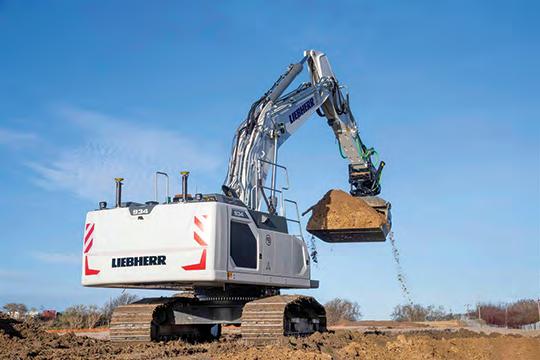

The partnership between Liebherr and Leica Geosystems automatic 3D machine control system featuring an allows Liebherr customers to purchase generation 6 inclination/rotation function. and 8 crawler excavators and wheeled excavators with a factory-fitted 2D and 3D machine control system, as an option. The first customer to benefit from this arrangement is a British company, Brad-Pave. Factory installation has the advantage of ensuring high system reliability, thanks to the expertise of the staff doing the installation work, in addition to reducing down-time on site. The company expects to increase its The generation 8 R 934 crawler excavator comes with the productivity with the help of this new built-in system. Leica 3D passive system and will be soon updated with a semi-automatic system featuring an automatic inclination/ rotation function. The machine control system is critical to ensuring accurate and effective work. On its first construction site job, the R 934 was mainly used to dig a large drainage trench across a field. The machine’s power and responsiveness were entirely to the operator’s satisfaction. The 7.1 t counterweight and 800 mm pads ensure good stability under all conditions. The machine A Liebherr R 934 G8 crawler excavator, the first hydraulic excavator with a factory-fitted Leica Geosystems machine control system, has been delivered to a customer in the UK. has run up 350 hours on the clock since delivery. The R 934 crawler excavator is the first Liebherr machine with a factory-fitted Leica Geosystems control system. The partnership between Liebherr and Leica Geosystems, announced in March 2020, enables customers to benefit from the expertise of both companies, to deliver more advanced and reliable solutions. This meant that BradPave was able to purchase an excavator fitted with a Leica Geosystems semi- The partnership between Liebherr and Leica Geosystems, announced in March 2020, enables customers to benefit from the expertise of both companies.
KLEEMANN OFFERS
NEW MOBILE JAW CRUSHER
With the market launch of the new MOBICAT MC 110(i) Furthermore, new components, such as a radio remote EVO2, Kleemann presents a mobile jaw crushing plant control and a small radio remote control, have been of the new generation. The further development of the integrated in the SPECTIVE world. The new digital tried and tested predecessor plant offers users ground- solution, SPECTIVE CONNECT, sends all important plant breaking technologies for optimising all areas, including data to the smartphone. economics, operability and sustainability. In the new MOBICAT MC 110(i) EVO2, Kleemann During the development of the MOBICAT MC 110(i) EVO2 has integrated a series of new technologies and mobile jaw crusher plant, Kleemann concentrated on improvements. The CFS (Continuous Feed System) the requirements of demolition and building companies, guarantees a continuous crusher feed and thus a daily crushing contractors and quarry operators. With an output of up to 10% more. The independent doublehourly output of up to 400 t/h, the new mobile jaw deck prescreen effectively separates fines before crusher meets the requirements in the medium output they reach the crushing process. This increases the range. It delivers high performance in a wide variety of total plant throughput and is gentle, for example, on quarry and recycling applications, where the emphasis is downstream cone crushers in the second crushing on effective coarse crushing. stage. Improved feed behaviour is guaranteed, on During the further development of the MC 110(i) EVO2, the development engineers from Kleemann in the main German factory in Göppingen placed the focal point on optimum transportability and a fast start-up. The transport height was reduced by 20 cm to 3.4 m. the one hand, by the extra long articulated crusher jaw, whereas a flattened transition to the crushing chamber makes optimum material flow possible. The accessibility for fast, safe and convenient maintenance has also been optimised. Relocation is now possible with simplified transport such With its technical solutions, Kleemann concentrates as semi low-loaders. The start-up procedure itself takes on the subject of energy efficiency in all of its new only around 10 minutes and includes set-up times for and further developments. The improved diesel-direct flaps, belts and feed hopper. drive concept is characterised by the economical use of A special highlight of the MOBICAT MC 110(i) EVO2 is a new, effective, two-stage overload system. It effectively prevents blockages and material bridging, that can lead fuel, which minimises operating costs. The power fan guarantees increased cooling capacity, operates only when required, and reduces fuel consumption. to unwanted downtimes. If uncrushable material enters the crushing process, the CSS opens 2x faster than with the predecessor plant or, as an option, even up to 40x faster. This increases the availability and thus the overall output. With the further development of SPECTIVE, Kleemann has set the standards for user interfaces in the sector even higher. This digital operating concept has an intuitive structure and improves plant operation with its extensive features. The 12 inch touch panel has been optimised with regard to user guidance and visualisation. The MOBICAT MC 110(i) EVO2 is designed for the first crushing stage and is used to crush medium-hard to hard natural stone, and in recycling.
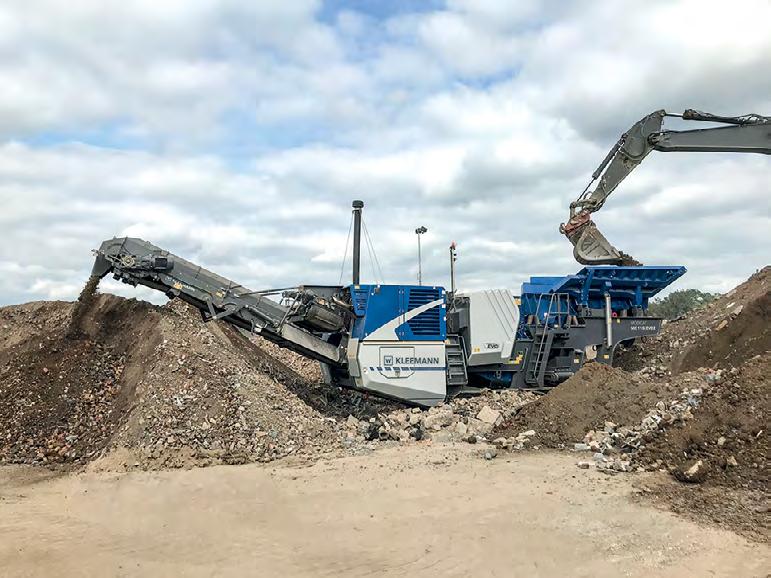
IES-PSB ACADEMY

STUDENT CHAPTER TURNS TWO
PSB Academy is the first private education institution to form a student chapter with IES, set up on 25 September 2018 through the effort of its students, as well as the chapter advisor (and currently chairman of the Student Chapter and Young Engineer Committees) Mr Syafiq Shahul. On 30 January 2021, the two years of success was celebrated at the IES-PSB Academy Student Chapter Leadership Forum, held at PSB Academy’s City Campus at Marina Square. In his keynote address, IES President Dr Richard Kwok exhorted the student members to “adopt a lifelong learning mind set to continuously grow your technical expertise to stay at the leading edge of technological developments; and … to acquire soft skills such as business knowledge, people management and communications.” Mr Derrick Chang, CEO of PSB Academy, then presented a token of appreciation to Dr Kwok, in acknowledgement of IES’ support throughout the years. Moving on to the Leadership Forum proper, the first presentation was delivered by Er. S Yogeeswaran, Vice President of the Membership Relations Group. He spoke about the qualities required of future engineers, such as being adaptable, a team player, ready to move out of one’s comfort zone, and to always be inquisitive. He noted that while everyone might start off as an engineer, one’s career might lead to leadership in other professions, as engineers are versatile. Er. Deckson Ang, a committee member in the Young Engineers Committee, shared his thoughts on leadership next. Citing management guru Peter Drucker, he pointed out that “Only three things happen naturally in organisations: Friction, confusion and underperformance. Everything else requires leadership.” He focused on the importance of it and shared several strategies of self-leadership; namely by having selfawareness, self-reflection and self-regulation. It was an illuminating Saturday for the IES-PSB Academy Student Chapter members who were in attendance. Cheers to many more good years ahead!


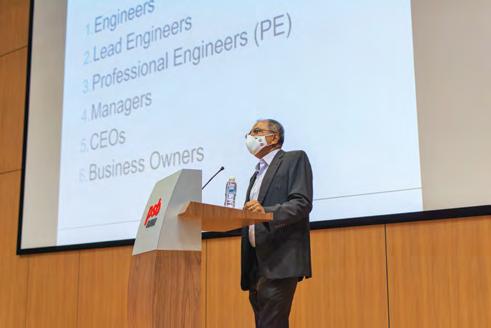
Mr Derrick Chang, CEO of PSB Academy, presented a token of appreciation to Dr Kwok.
Er. Yogeeswaran spoke about the qualities required of future engineers. Er. Ang shared his insights on the importance of leadership.

IES UPDATE
PROF YEOH INVITED TO SPEAK TO NUS ENGINEERING SCHOLARS
On 10 February 2021, IES Immediate Past President Professor Yeoh Lean Weng was invited by the NUS Institute for Engineering Leadership to share his insights and experiences with the university’s engineering scholars. The sharing session was a component of the exclusive leadership journey that the scholars were expected to undertake during their terms of study. Introducing systems-level thinking to his audience, Prof Yeoh opined that engineers thought in terms of systems – deconstructing larger systems and concepts into smaller modules and putting them back together in application through various contexts. This involves examining a system of interest from a variety of perspectives: Big picture, functional, temporal, and continuum. On leadership, Prof Yeoh described a few main pointers, such as having knowledge and competency, being decisive and taking ownership, protecting one’s subordinates and superiors, and knowing how to gain influence and exert authority. At the same time, he urged the scholars to seek out real and practical learning experiences, quoting Singapore’s founding Prime Minister, Mr Lee Kuan Yew: “I do not yet know of a man who became a leader as a result of having undergone a leadership course”. With an analytical engineering mind honed by systemslevel thinking, coupled with superb leadership skills, an engineer would not only excel in his field, but also achieve excellence in other aspects of work and life. Furthermore, being able to assess various factors relative to a decision point and see things on a macro-level is a great advantage in helping one formulate more effective business strategies. The enlightening talk ended with an engaging Q&A session over lunch.
Prof Yeoh spoke at length on systems-level thinking to the NUS engineering scholars.
The scholars got to ask Prof Yeoh (centre) questions over lunch, hosted by Prof Hang Chang Chieh, Executive Director, Institute of Engineering Leadership (second from left, in blue).

ER. TAN EE PING
IES PRESIDENT (1992 – 1994)
Er. Tan Ee Ping, the 14th President of IES, passed away peacefully on 18 March 2021. He was 82. Over the course of his 55-year career, he significantly contributed to the growth of the built environment and engineering profession in Singapore. After graduating with honours in civil engineering from the University of Malaya in 1964, he began his career in EDB and JTC and played a vital role in the planning, design and project management of Jurong Industrial Estate. In 1970, he started his own engineering consultancy, TEP Consultants Pte Ltd. Er. Tan’s expertise was instrumental in the completion of the Hitachi Robin Dockyard project and the development of Changi Airport. He also provided insight into areas such as the planning and management of Singapore Airlines’ offices, SATS engine workshops, CAFHI storage tank structures, and tail docks for aircraft maintenance. Er. Tan served on numerous government and statutory boards, namely the Professional Engineers Board, Board of Architects, National Productivity Board, Strata Title Board and the Construction Industry Development Board (CIDB) to promote excellence in professional engineering practice. As Chairman of CIDB’s Steering Committee for Buildability, he promoted the adoption of prefabricated concrete elements to enhance construction quality and productivity. Prefabricated Prefinished Volumetric Construction (PPVC) has since been used to complete many multi-storey buildings in Singapore. Er. Tan also actively participated in various engineering societies. Apart from heading IES between 1992 and 1994, he chaired the ASEAN Federation of Engineering Organisations (AFEO) from 1992 to 1993, and was Vice President of the Institution of Structural Engineers (IStructE) from 1993 to 1994. Furthermore, he played a central role in the formation of the Singapore Mediation Centre to provide alternative consensual dispute resolutions for the construction industry, and was active as an accredited regional arbitrator, principal adjudicator and mediator. Er. Tan was conferred fellowship in the following societies: IES (1976), IStructE (1984), Institution of Civil Engineers (1984), and Singapore Institute of Arbitrators (1984). He was also made Honorary Fellow of IES, AFEO, and the Academy of Engineering, Singapore. Over the years, he earned many awards in recognition of his talent, service, and contributions. These include the Best Buildable Design Award (CIDB; 1991 and 1994), IES Long Service Gold Award (1996), Public Service Medal (1997), Long Service Gold Award in Education (2010), Structural Steel Excellence Award (2012), 20-year outstanding dedicated service award (MND; 2015), and the Distinguished Professional Engineer Award (2016). In honour of his dedicated efforts and outstanding accomplishments that have greatly benefited IES, the engineering community, and Singapore, Er. Tan was conferred the IES Lifetime Engineering Achievement Award in 2019. The President, Council and Secretariat are deeply saddened to learn of his passing and offer their sincere condolences to his family.
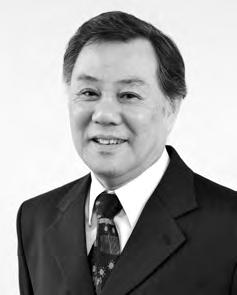
ADVERTISERS’ INDEX
IES Chartered Engineer ––––––––––––– Inside Front Cover IES Membership –––––––––––––––––– Inside Back Cover Mapei Far East Pte Ltd –––––––––––––––––––– Page 03 Who’s Who In Engineering, –––––– Outside Back Cover Singapore (3rd Edition)





